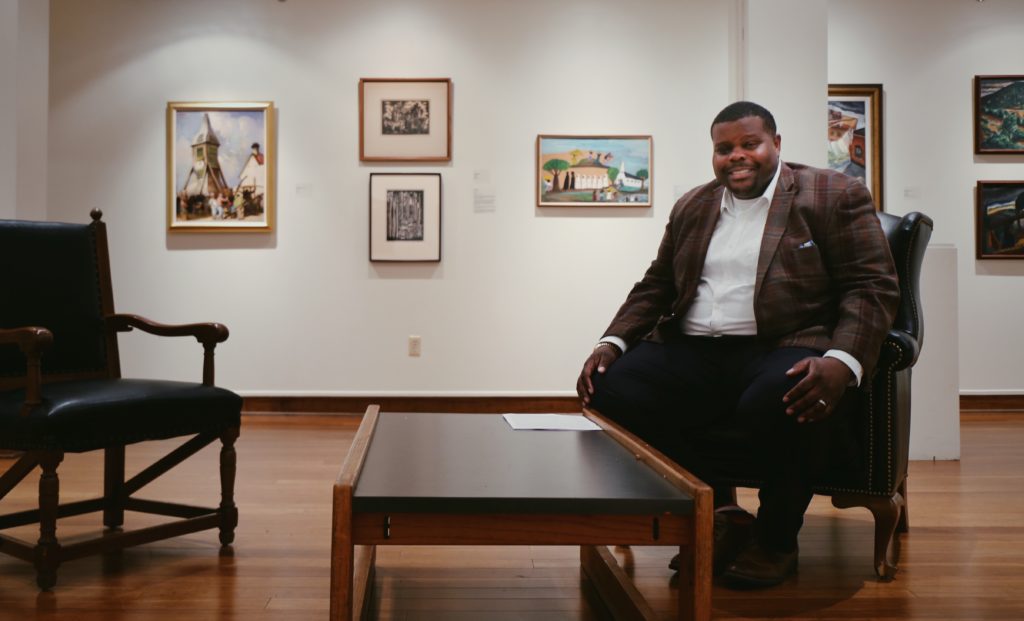
Nashville’s Fisk University has joined a national effort to double the number of minorities in leadership positions at art museums. Right now only 16 percent of those jobs are held by minorities.
Art museums serve a broad purpose in their communities. They’re often part library — historical records of a region or artist’s history — and part cultural centers. Yet, nationwide the number of visitors to art museums has been on the
decline.
Part of that reason may be because not everyone feels represented, says Jamaal Sheats, curator of Fisk University’s
Carl Van Vechten Gallery
. But, he says, there are a lot people working to change that “and it’s important to do it if you want to see [art museums] continue. If we don’t begin to reflect the communities that we serve, we will become extinct.”
Since Sheats joined the faculty two years ago, the historically black college has found new ways to introduce more students to the world of fine art.

The Van Vechten Gallery receives about 10,000 visitors every year and has a small staff of three, but now also counts more than 40 student volunteers.
“It just didn’t happen overnight,” says Sheats, who is
also an artist
. “The provost said, ‘We want to integrate the galleries into all academic disciplines.’ And so we focused on creating multi-disciplinary programs, and with that we found that many of our students had never been to an art museum.”
They began by showing students that the “art world” isn’t just for artists. While humanities majors looked at the way people experienced museums by testing captions and different ways to present information, foreign language majors led tours in Spanish and French.
STEM students — those majoring in science, technology, engineering, and mathematics — were shoo-ins for art conservation work. The STEM subgroup has an even more diminutive minority presence, Sheats says.
At a workshop hosted by the University of Delaware, they joined students from other HBCU’s in learning how physics comes into play when restoring a historic home or how a destroyed Roman sculpture can be pieced back together by tracing mineral deposits in the fragments.
In November, Fisk was chosen to receive part of a
$6 million grant
which, over the next three years, will fund programs at 20 art museums across the U.S. seeking to advance diversity across museum management roles.
The program is funded by the Ford Foundation and Walton Family Foundation — the same family that operates the Crystal Bridges Museum in Arkansas, which in 2012
bought rights from Fisk
to share its prized Alfred Stieglitz Collection.
Fisk’s proposal creates a two-year certificate program hosted by the university and open to undergraduate students from a number of allied HBCUs.
The project should kick off in March, when the first cohort of ten students will begin online classes on top of their regular assignments. They will also spend several weeks traveling to partner institutions for training in four modules: museum education, development (including marketing and finance), curatorial and conservation training.
By the second year, the hope is that the students will not only have chosen a concentration but will also have found a mentor at those institutions. They will have to apply directly to those partner institutions in the second year, to be be hosted for a year-long paid fellowship where they will work hands-on.
Sheats says the goal of the national grant is to double the number of minorities in management positions like his by 2025.
“It sucks when you go somewhere and you’re with 200 professionals or 250 organizations and there’s only four people of color,” Sheats says.
It comes down to exposure, he says. “If you can’t see it, you can’t be it.”
He hopes that through programs like this in the future some of his students will become his colleagues.


